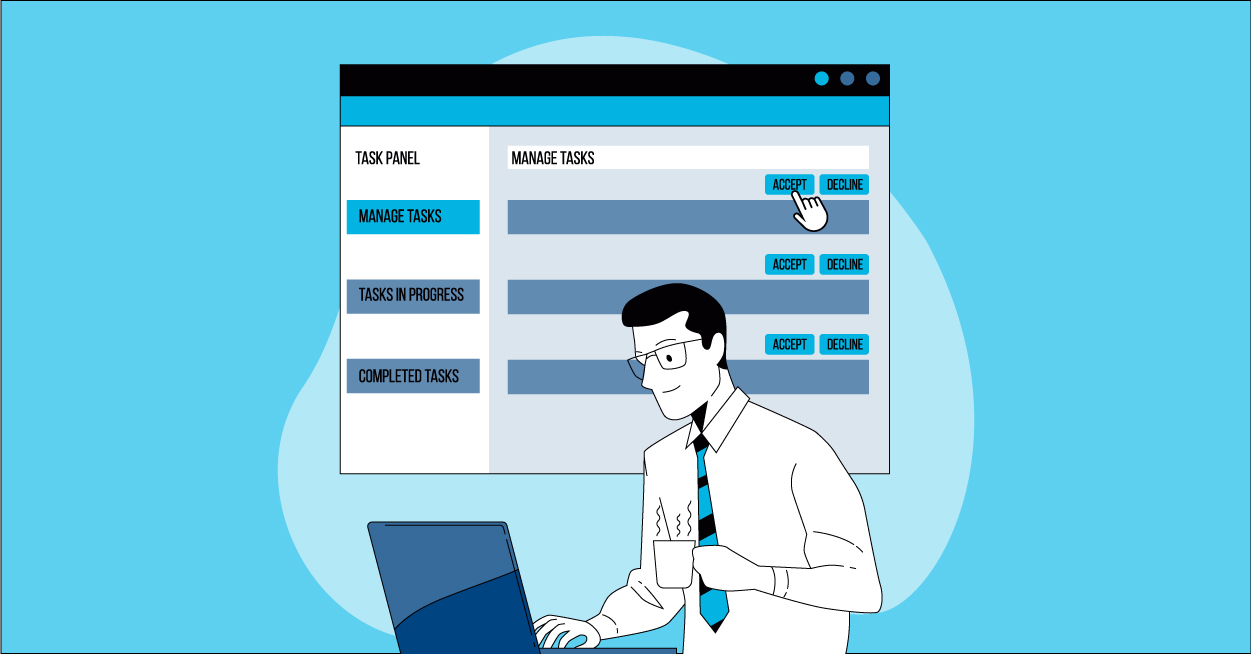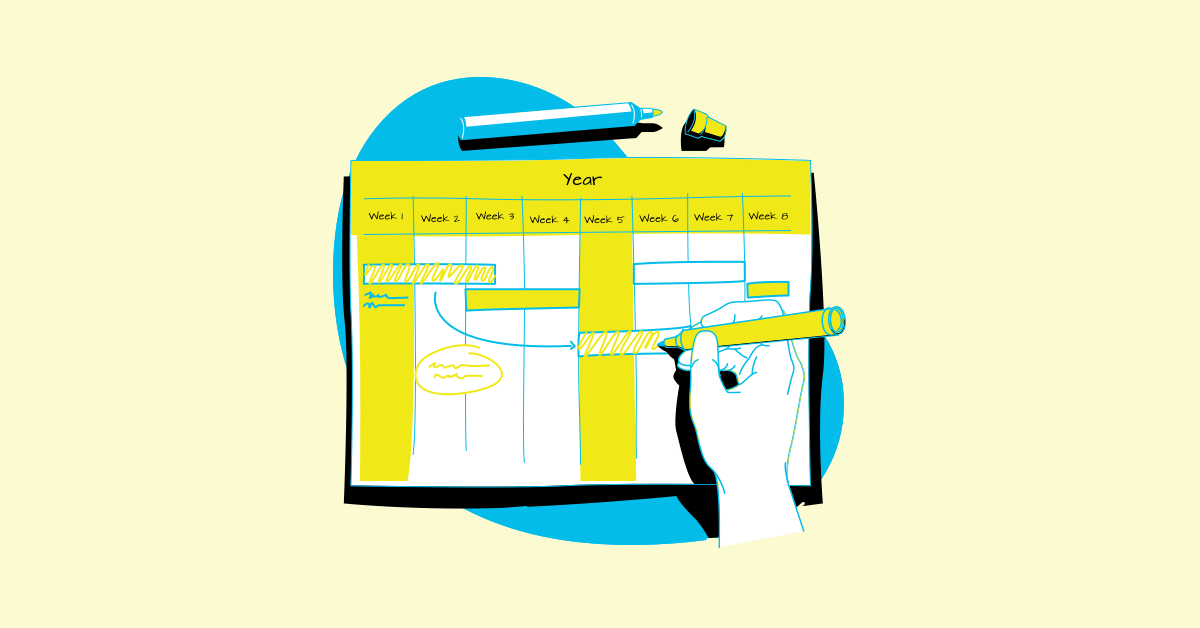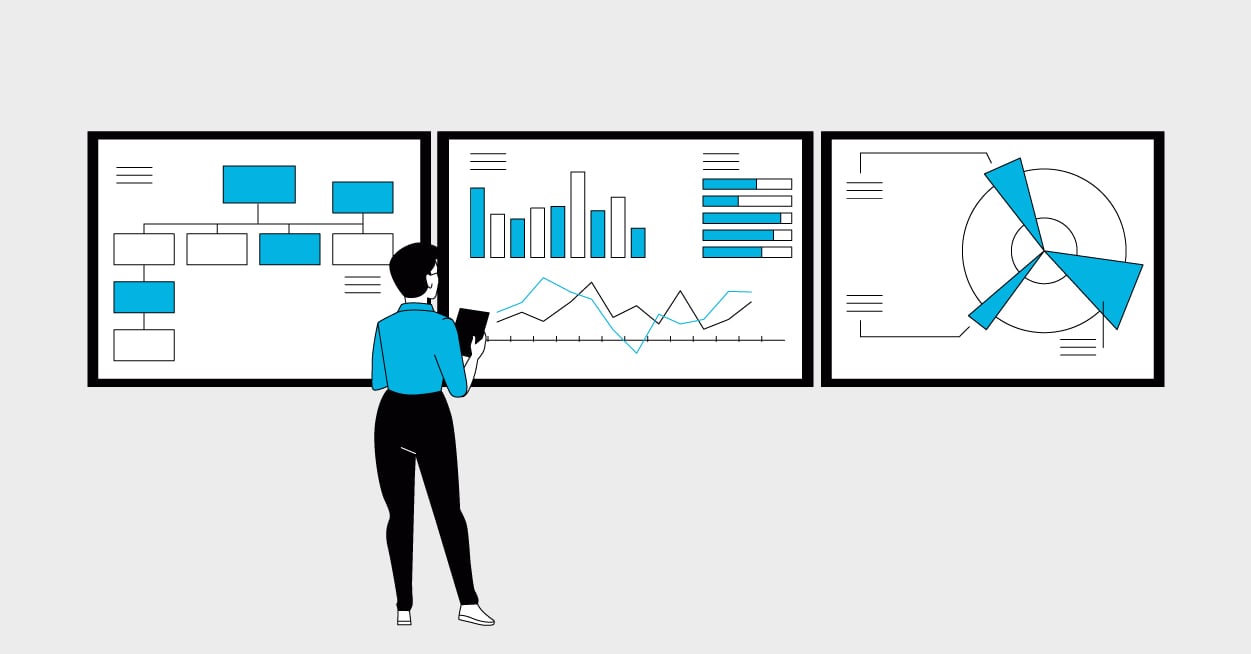Efficient Testing Infrastructure: Strategies for Staying Up-to-Date
Author: Afsal Backer
Published: April 15, 2024

Table of Contents
Building software is thrilling, but shipping a flawless product? That's the real win. A solid testing plan is key. It's your roadmap to validating functionality, performance, and a killer user experience. But a great plan goes beyond a simple checklist. It's about strategy. We're talking aligning with project goals, anticipating roadblocks, and prioritizing quality at every turn. And what about your testing infrastructure? Is it efficient? Up-to-date? Let's explore the essential attributes of a test plan, dive into different types, and even touch on automation test plans. Get ready to build a plan that doesn't just check boxes, but sets you up for a truly exceptional product.
What Are Your Project Goals?
The cornerstone of an effective testing plan is a profound understanding of the project’s objectives. Each test case should be meticulously designed to align with the overarching goals, ensuring that every aspect of testing contributes directly to achieving project milestones. This alignment ensures that the testing efforts are not just thorough but are also meaningful in the context of the project’s success.
To align testing with project goals, the planning stage might involve a series of meetings with project stakeholders to fully understand what success looks like. For example, if the project goal is to develop a high-load e-commerce website, test cases should specifically verify scalability and user concurrency.
Key Takeaways
- Strategic testing plans are essential for software project success: A well-defined plan acts as a roadmap for your team, ensuring thorough validation of functionality, performance, and user experience, ultimately leading to a higher-quality product.
- Proactive risk assessment and scope definition are key: Clearly outlining what to test, choosing appropriate testing strategies, and anticipating potential problems helps ensure comprehensive coverage and efficient resource allocation.
- A robust test infrastructure streamlines testing and improves quality: Building and maintaining a reliable infrastructure, integrating it with your project plan, and leveraging automation tools like MuukTest enables continuous testing and faster feedback cycles.
Scope Definition and Strategic Approach
A good testing plan delineates its scope with precision, clearly outlining what is to be tested and what falls outside the testing boundaries. This clarity is crucial for focusing efforts and resources on areas of highest impact. Selecting the right testing strategy—be it black box, white box, or gray box testing—depends on the project requirements and is critical for uncovering different types of issues that might not be visible with a single approach.
For example, for a banking app, the scope might emphasize security testing and compliance testing with financial regulations, choosing gray box testing to understand both the internal workings and simulate external attacks.
Defining the Scope of Your Testing
Defining the scope of your testing is like drawing a blueprint for your QA process. It means clearly outlining which features, functionalities, and components of your software you will test, and equally important, what you *won't* test. This clarity is essential for several reasons. It helps focus your team's efforts and resources on the most critical areas, prevents scope creep (where testing expands beyond its intended boundaries, consuming valuable time and budget), and makes it easier to track progress and measure the effectiveness of your testing efforts. Think of it as setting clear boundaries for your testing playground—everyone knows where they can play and what's out of bounds. This focus, as highlighted by Mobidev, ensures efficient and effective use of your testing resources.
Choosing the Right Testing Strategies
After defining the scope, choose the right testing strategies. A software testing strategy, as explained by Mobidev, is a roadmap outlining how testing contributes to your project goals. It details what needs testing, when those tests should occur, and how you will execute them. There's no one-size-fits-all approach. The best strategy depends on several factors, including the type of software, your project timeline, and your budget. Consider the complexity of your software, your testing team's experience, and the risks associated with different functionalities. Selecting the appropriate strategy is crucial for uncovering various potential issues and ensuring comprehensive test coverage. For a more efficient approach to testing, consider exploring MuukTest's AI-powered test automation services.
Unit Testing
Unit testing, as described by BrowserStack, focuses on the smallest parts of your software: individual components or modules. It's like testing the individual ingredients of a cake before baking. By isolating and testing each unit, you identify and fix bugs early in the development process, preventing them from becoming larger, more complex problems later. This approach improves code quality and makes debugging easier.
Integration Testing
Once the individual units work correctly, integration testing comes into play. This type of testing, according to BrowserStack, examines how these different units interact. Returning to our cake analogy, this is like checking if the layers, frosting, and decorations work together harmoniously. Integration testing helps identify issues arising from combining different components, ensuring they function seamlessly as a whole.
System Testing
BrowserStack defines system testing as testing the entire integrated system. This is the "final bake"—checking if the finished product meets all the specified requirements and performs as expected. System testing validates the complete software product, ensuring all components work together correctly and the system meets the desired functionality and performance standards.
Acceptance Testing
Acceptance testing, per BrowserStack, is the final checkpoint before your software goes live. It determines whether the system meets the pre-defined acceptance criteria and is ready for deployment. This is where you present the "cake" to the client (or end-users) to ensure they're happy with the final product. Acceptance testing confirms that the software is functional and meets user needs and expectations.
Performance Testing
Performance testing, as explained by BrowserStack, evaluates how your software performs under different conditions, including its speed, scalability, and stability under various workloads. It's like checking if your cake can withstand different temperatures and humidity levels without collapsing. Performance testing ensures your software can handle real-world usage and maintain a positive user experience. If you're looking for robust performance testing solutions, consider exploring MuukTest's test automation services.
Security Testing
BrowserStack describes security testing as identifying vulnerabilities and risks in your software. It's like checking for any potential "toxins" in your cake. Security testing aims to protect your software and its data from unauthorized access, ensuring confidentiality, integrity, and availability of information. MuukTest's expertise in QA and testing can be a valuable resource for ensuring the security of your applications.
Compatibility Testing
Compatibility testing, according to BrowserStack, ensures your software works seamlessly across different devices, operating systems, and browsers. It's like making sure your cake can be enjoyed by people with different dietary restrictions. Compatibility testing guarantees a consistent user experience regardless of the platform or device used.
Regression Testing
BrowserStack defines regression testing as verifying that recent code changes haven't negatively impacted existing functionalities. It's like checking if adding a new ingredient hasn't ruined the original flavor. Regression testing ensures new updates or bug fixes don't introduce new problems. MuukTest can help automate this process, ensuring efficient and thorough regression testing.
Usability Testing
Finally, usability testing, as explained by BrowserStack, focuses on how user-friendly your software is. It's like checking if your cake is easy to slice and serve. Usability testing assesses how easily end-users learn, use, and complete tasks within your software, ensuring a positive and efficient user experience.
Resource Allocation and Scheduling
Detailed planning of resources, including human skills, tools, and environments, is pivotal. Identifying the need for specialized resources early on ensures that the testing phase progresses smoothly without unnecessary delays. Equally important is setting a realistic timeline with milestones for major testing phases, enabling effective tracking and management of the testing process. For instance, the plan could stipulate the use of automated testing libraries like Playwright, test management tools like Qase, and JIRA for tracking defects.
You can schedule regression testing to occur on a regular basis, coinciding with your sprint cycles, ensuring new features are continuously validated without disrupting ongoing development.
Risk Management and Test Criteria
Identifying potential risks at the outset and devising mitigation strategies is a hallmark of a resilient testing plan. Clear criteria for starting (entry) and concluding (exit) the testing phase are essential for maintaining focus and ensuring that testing is both comprehensive and time-bound. This structured approach aids in managing expectations and evaluating the progress effectively.
Define specific risks like code instability in critical features or potential security vulnerabilities. For each identified risk, the plan would include targeted tests or review points.
For example, a mobile application project might recognize the high risk of data breaches and incorporate extensive security testing and code reviews before each app release.
Identifying and Assessing Risks
Thinking about what could go wrong early on, and having a plan B, is key to a solid testing strategy. A good testing plan doesn’t just list tests; it anticipates potential problems. This proactive risk assessment helps create a more resilient testing process. Identifying potential risks at the outset and devising mitigation strategies is a hallmark of a resilient testing plan. For example, imagine you’re testing a new feature in a mobile banking app. A potential risk could be slow transaction processing during peak hours. To address this, your plan might include load testing to simulate high user traffic and ensure the app performs smoothly under pressure. Another common risk is security vulnerabilities. Defining specific risks, like code instability in critical features or potential security vulnerabilities, allows you to create targeted tests or review points. This could involve penetration testing to identify and fix any security loopholes before the app goes live. By addressing these risks upfront, you can prevent costly issues down the line and build a more robust and reliable product. For each identified risk, the plan would include targeted tests or review points. At MuukTest, we specialize in identifying and mitigating these kinds of risks, ensuring comprehensive test coverage within 90 days.
Defining Clear Test Criteria
Just like a roadmap needs a clear starting point and destination, your testing plan needs well-defined entry and exit criteria. Clear criteria for starting (entry) and concluding (exit) the testing phase are essential. These criteria act as goalposts, keeping the testing process focused and efficient. This structured approach aids in managing expectations and evaluating the progress effectively. Entry criteria define the conditions that must be met before testing can begin. This might include having a stable build of the software, completing the necessary documentation, or setting up the test environment. Exit criteria, on the other hand, specify when testing is considered complete. This could be based on achieving a certain level of test coverage, fixing all critical bugs, or meeting performance benchmarks. For instance, exit criteria might include achieving 95% test coverage and resolving all priority one bugs. This clarity ensures everyone is on the same page and understands what needs to happen for testing to be considered successful. Learn more about how MuukTest can help you define and achieve your testing goals with our QuickStart program.
Documentation, Communication, and Flexibility
Effective communication through detailed documentation and regular reporting keeps all stakeholders informed and engaged. However, a good testing plan also recognizes the need for flexibility, allowing for adjustments based on feedback, test results, and evolving project needs. This balance between detailed planning and adaptability is crucial for navigating the unforeseen challenges that arise in complex software projects.
This step could elaborate on the tools and formats for documentation (like test plans and reports) and communication channels (such as weekly meetings and real-time chat tools). Maintaining an evolving document of the testing strategy that is accessible to all stakeholders, ensuring constant alignment and visibility is a crucial part of the software life cycle.
Integration with Overall Project Plan
For testing efforts to be truly effective, they must be integrated with the broader project plan. This integration ensures that testing phases are aligned with development stages and that every test supports the project milestones. Such coordination not only improves efficiency but also reinforces the relevance of testing activities to the project’s overall success. For this to be effective, team members should discuss how testing timelines and milestones should be synchronized with development phases, perhaps using a Gantt chart to visualize dependencies.
Emphasis on Quality and User Experience
Ultimately, the aim of any testing plan should be to enhance the product's quality and user experience. This user-centric approach involves crafting testing scenarios that reflect real-world usage, ensuring that the final product not only meets technical specifications but also delights users. More detailed user scenarios that represent different end-user profiles could be described, showcasing how the testing plan addresses these varied experiences.
Building a Robust Test Infrastructure
A reliable test infrastructure is the backbone of efficient software testing. It's the environment where you build, execute, and monitor tests, directly impacting the quality and speed of your development cycle. Think of it as the foundation upon which you build quality software. A shaky foundation leads to unstable testing, while a solid one paves the way for smooth, reliable results.
Key Components of an Efficient Test Infrastructure
Several key components contribute to a well-rounded test infrastructure:
System Under Test
This is the application or system you're testing. Clearly defining the system under test helps focus your testing efforts and ensures you're addressing the right areas. This is crucial, especially for larger, more complex systems.
Test Environment
A controlled and isolated test environment mimics real-world conditions, allowing for repeatable and reliable tests. This isolation prevents external factors from influencing test results and ensures consistency. A good test infrastructure provides this controlled environment. This facilitates test automation, saving time and reducing human error.
Test Data Management
Effective test data management is crucial. This involves creating, managing, and storing test data securely and efficiently. Creating realistic test environments requires significant time and resources. Consider using synthetic data generation or data masking techniques to protect sensitive information.
Test Automation Tools
Choosing the right test automation tools streamlines the testing process, allowing for faster execution and more comprehensive coverage. Select tools that integrate well with your existing workflows and support the technologies used in your application. Services like MuukTest offer AI-powered test automation designed for comprehensive coverage and efficiency.
Ensuring Your Infrastructure is Up-to-Date
Maintaining an up-to-date test infrastructure is as important as building it. Here's how:
Regular Updates and Maintenance
Regularly update your testing tools, libraries, and dependencies. Staying current with updates is challenging but essential for ensuring compatibility and leveraging the latest features. This also reduces security vulnerabilities.
Leveraging Infrastructure as Code (IaC)
IaC manages and provisions computer resources through code, enabling version control similar to application code. This approach ensures reproducible and consistent infrastructure deployments, simplifying management and reducing errors.
Integrating with CI/CD Pipelines
Integrating your testing infrastructure with your CI/CD pipelines automates the testing process. This provides rapid feedback and prevents regressions by automatically running tests whenever code changes. This integration is key for faster release cycles and continuous quality improvement.
Validating Your Test Infrastructure
Regularly validate your test infrastructure to ensure accuracy and proper function.
Version Control and Configuration Management
Use version control for your test scripts and configuration files. Checking component versions and configurations is crucial. This allows you to track changes, revert to previous versions, and maintain consistency across different environments.
Monitoring and Performance Analysis
Continuously monitor your test infrastructure's performance. Regular testing, especially as technology evolves, is vital. Track metrics like test execution time, resource utilization, and error rates to identify bottlenecks and areas for improvement. Consider using monitoring tools to automate this process.
Attributes of a Test Plan
A comprehensive test plan is essential for guiding your testing efforts. It outlines the scope, strategy, and execution details, ensuring everyone is aligned and testing supports project goals.
Purpose and Scope
Clearly define the purpose of the testing effort and its scope. What are you testing, and what falls outside the scope? This clarity focuses your efforts and prevents scope creep.
Test Strategy and Approach
Outline the overall testing strategy and specific methods. Will you use black-box, white-box, or gray-box testing? What types of tests will you conduct (e.g., unit, integration, system, acceptance)? This clarifies the "how" of your testing process.
Test Environment Details
Specify the details of your test environment, including hardware, software, and network configurations. This ensures consistency and reproducibility.
Test Case Design and Execution
Describe how test cases will be designed, executed, and documented. Include details on test data, expected results, and pass/fail criteria. This provides a clear roadmap for testers.
Defect Tracking and Reporting
Establish a process for tracking and reporting defects. A defect tracking system helps log, prioritize, and manage bugs effectively.
Test Metrics and Reporting
Define the metrics you'll use to measure testing effectiveness. Regularly report on test progress, results, and key metrics to stakeholders. This provides visibility into the testing process.
Roles and Responsibilities
Clearly define the roles and responsibilities of each team member involved in testing. Who designs test cases? Who executes tests? Who manages defects? Clear roles prevent confusion and ensure accountability.
Communication and Collaboration
Establish clear communication channels and collaboration mechanisms. Regular team meetings, status reports, and shared documentation keep everyone informed and aligned.
Risk Management
Identify potential risks that could impact testing and develop mitigation strategies. Consider risks like schedule delays, resource constraints, and technical challenges. Proactive risk management helps prevent disruptions.
Exit Criteria
Define the criteria for concluding the testing phase. This might include achieving specific test coverage, resolving all critical defects, or meeting performance benchmarks. Clear exit criteria prevent endless testing cycles.
Test Deliverables
List the deliverables produced during testing. This might include test plans, test cases, test scripts, defect reports, and test summary reports. This clarifies expected outputs.
Automation Test Plan Considerations
If incorporating test automation, consider these additional factors:
Selecting Automation Tools
Choose automation tools based on your project needs and technical stack. Consider factors like ease of use, integration capabilities, and platform/technology support. The right tools are essential for automation success.
Defining Automation Scope
Determine which tests are suitable for automation. Focus on repetitive tasks, regression tests, and tests requiring complex data setup. Strategic automation maximizes ROI.
Developing and Maintaining Test Scripts
Develop and maintain robust and reusable test scripts. Follow coding best practices and use version control. Well-maintained scripts are easier to update and adapt.
Integrating with CI/CD
Integrate automated tests into your CI/CD pipeline for automatic execution with every code change. This ensures continuous testing and faster feedback.
Reporting and Analysis
Generate detailed reports on automation test results. Analyze results to identify trends, bottlenecks, and areas for improvement. Consider tools like MuukTest, which provides comprehensive test coverage efficiently and integrates with CI/CD workflows for streamlined reporting and analysis. They also offer scalable solutions tailored to specific customer needs.
Balancing Inclusion and Exclusion
Recognizing what to exclude is as critical as knowing what to include. A good testing plan avoids vagueness, unrealistic timelines, and overly rigid structures that can stifle the testing process. It also pays due attention to non-functional requirements like performance and security, which are vital for a well-rounded evaluation of the software’s quality. Identifying common pitfalls in testing scope, such as over-testing certain features at the expense of others or neglecting to test under realistic system loads is important.
For a CRM software like Salesforce, while functionality testing of Force.com custom features is essential, it's also crucial to exclude excessive testing of standard features like lead generation and account conversion as these are already tested thoroughly by Salesforce in every release.
Conclusion
A balanced and strategic testing plan is indispensable for the success of any software project. By focusing on what to include and what to exclude, such a plan ensures thoroughness, relevance, and flexibility in testing. This strategic approach not only enhances the testing process but also aligns it with business objectives, leading to the delivery of a high-quality product that meets both functional and user experience standards. In crafting a testing plan that embodies these principles, teams can navigate the complexities of software testing with confidence, contributing significantly to the project's overall success.
Related Articles
- What Makes a Good Test Plan?
- Efficient Test Infrastructure: Strategies for Modern Testing
- Software Test Plan Management: The Ultimate Guide
- A Practical Guide to Software Test Plan Example
- A Clear and Concise Guide to Software Testing
Frequently Asked Questions
What is a test plan?
A test plan in software testing is a comprehensive document that outlines the strategy, objectives, scope, resources, schedule, and approach for testing a software application. It ensures that all aspects of the software are thoroughly evaluated and validated and guides the process from start to finish.
What is the role of a test plan in software development?
Test plans fit into the overall software development process by providing a structured framework for planning and executing related activities within the development lifecycle. When testing teams create plans, they cover strategies and methodologies tailored to the project's specific needs. These strategies encompass the overall approach to testing, including selecting techniques, tools, and resources.
Afsal Backer is a test automation engineer with experience in building UI and API test automation frameworks, implementing CI pipelines for QA, and test execution in AWS. He has certifications from Test Automation University. Afsal often shares on his LinkedIn and blog.
Related Posts:

BDD Approach: A Practical Guide to Software Testing
Transform your testing strategy with a BDD approach. Learn how BDD frameworks enhance collaboration, improve test quality, and ensure comprehensive coverage.

A Practical Guide to Test Automation Strategy
Quality doesn’t scale by accident; it scales with intention. As software teams grow and ship faster, a thoughtful software test automation strategy becomes the difference between smooth releases and...

Continuous Testing: The Complete Guide for Dev Teams
Learn how continuous testing can enhance software quality and speed up development cycles. Discover key practices and benefits for your team.
%20(1).png?width=150&height=69&name=MuukTest-logo---light-background%20(3)%20(1).png)